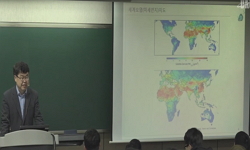Most of the rural development projects for the welfare of residents are mainly new construction and remodeling projects for community buildings such as village halls and senior citizens. However, in the case of the construction industry, it has been s...
http://chineseinput.net/에서 pinyin(병음)방식으로 중국어를 변환할 수 있습니다.
변환된 중국어를 복사하여 사용하시면 됩니다.
- 中文 을 입력하시려면 zhongwen을 입력하시고 space를누르시면됩니다.
- 北京 을 입력하시려면 beijing을 입력하시고 space를 누르시면 됩니다.

OpenLCA<sup>TM</sup> DB를 이용한 농촌 공동체 건축물 전과정평가 = Life Cycle Assessment of Rural Community Buildings Using OpenLCA<sup>TM</sup> DB
한글로보기https://www.riss.kr/link?id=A107746323
- 저자
- 발행기관
- 학술지명
- 권호사항
-
발행연도
2021
-
작성언어
-
- 주제어
-
등재정보
KCI우수등재
-
자료형태
학술저널
-
수록면
97-105(9쪽)
- DOI식별코드
- 제공처
- 소장기관
-
0
상세조회 -
0
다운로드
부가정보
다국어 초록 (Multilingual Abstract)
Most of the rural development projects for the welfare of residents are mainly new construction and remodeling projects for community buildings such as village halls and senior citizens. However, in the case of the construction industry, it has been studied that 23% of the total carbon dioxide emissions generated in Korea are generated in the building-related sector. (GGIC, 2015) In order to reduce the emission of environmental pollutants resulting from construction of rural community buildings, there is a need to establish a system for rural buildings by predicting the environmental impact. As a result of this study, the emissions of air pollutants from buildings in rural communities were analyzed by dividing into seven stages: material production, construction, operation, maintenance, demolition, recycling, and transportation activities related to disposal. As a result, 12 kg of carbon dioxide (CO), 0.06 kg of carbon monoxide (CO), 0.02 kg of methane (CH), 0.04 kg of nitrogen oxides (NO), 0.02 kg of sulfurous acid gas (SO), and non-methane volatile organics per 1m of buildings in rural communities It was analyzed that 0.02 kg of compound (NMVOC) and 0.00011 kg of nitrous oxide (NO) were released. This study proved that environmentally friendly design is possible with a quantitative methodology for the comparison of operating energy and air pollutant emissions through the design specification change based on the statement of the rural community building. It is considered that it can function as basic data for further research by collecting major structural changes and materials of rural community buildings.
동일학술지(권/호) 다른 논문
-
대규모 농업용저수지 수혜면적 변화에 따른 효율적 용수재분배 모의
- 한국농공학회
- 성무홍 ( Sung Muhong )
- 2021
- KCI우수등재
-
계층화분석 및 엔트로피 가중치 산정 방법에 따른 농업가뭄재해 취약성 평가
- 한국농공학회
- 문영식 ( Mun Young-sik )
- 2021
- KCI우수등재
-
- 한국농공학회
- 송창섭 ( Song Chang Seob )
- 2021
- KCI우수등재
-
- 한국농공학회
- 은콤보로리리셋시미 ( Nkombo Laure Lysette Chimi )
- 2021
- KCI우수등재




 ScienceON
ScienceON KISS
KISS







